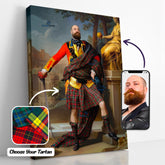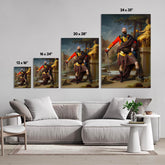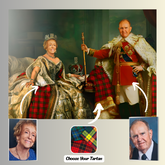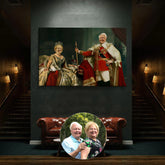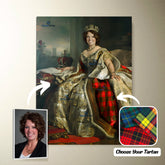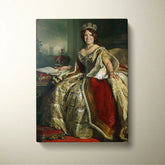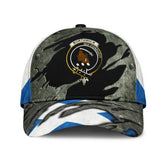-
Clan Borthwick Tartan Gnome Round Ceramic Ornament VI46 - Borthwick Tartan
Clan Borthwick Tartan Gnome Round Ceramic Ornament VI46 One of the best things about Christmas is that it gives you an excuse to dress up your home with all of the lovely ornaments we associate with the holiday season. With so many different types...- From $19.25
- From $19.25
- Unit price
- per
- Borthwick Tartan
-
Clan Borthwick Tartan Crest Round Ceramic Ornament HC43 - Borthwick Tartan
Clan Borthwick Tartan Crest Round Ceramic Ornament HC43 One of the best things about Christmas is that it gives you an excuse to dress up your home with all of the lovely ornaments we associate with the holiday season. With so many different types...- From $19.25
- From $19.25
- Unit price
- per
- Borthwick Tartan
-
Clan Borthwick Dress Ancient Tartan Crest Round Ceramic Ornament RY55 - Borthwick Dress Ancient Tartan
Clan Borthwick Dress Ancient Tartan Crest Round Ceramic Ornament RY55 One of the best things about Christmas is that it gives you an excuse to dress up your home with all of the lovely ornaments we associate with the holiday season. With so many...- From $19.25
- From $19.25
- Unit price
- per
- Borthwick Dress Ancient Tartan
-
Clan Borthwick Tartan Crest Star Ceramic Ornament JB81 - Borthwick Tartan
Clan Borthwick Tartan Crest Star Ceramic Ornament JB81 One of the best things about Christmas is that it gives you an excuse to dress up your home with all of the lovely ornaments we associate with the holiday season. With so many different types...- From $19.25
- From $19.25
- Unit price
- per
- Borthwick Tartan
-
Clan Borthwick Dress Ancient Tartan Crest Star Ceramic Ornament SC67 - Borthwick Dress Ancient Tartan
Clan Borthwick Dress Ancient Tartan Crest Star Ceramic Ornament SC67 One of the best things about Christmas is that it gives you an excuse to dress up your home with all of the lovely ornaments we associate with the holiday season. With so many...- From $19.25
- From $19.25
- Unit price
- per
- Borthwick Dress Ancient Tartan
-
Clan Borthwick Dress Ancient Tartan Clogs Classic IG29 - Borthwick Dress Ancient Tartan
Clan Borthwick Dress Ancient Tartan Clogs Classic IG29 Our shoes do run a bit small. We recommend sizing up if you want to be comfortable. Size Guide Product measurements may vary by up to 3~5mm There are two different ways to wear——you can wear...- $42.25
- $42.25
- Unit price
- per
- Borthwick Dress Ancient Tartan
-
Clan Borthwick Ancient Tartan Crest Clogs Classic GC17 - Borthwick Ancient Tartan
Clan Borthwick Ancient Tartan Crest Clogs Classic GC17 Our shoes do run a bit small. We recommend sizing up if you want to be comfortable. Size Guide Product measurements may vary by up to 3~5mm There are two different ways to wear——you can wear...- $42.25
- $42.25
- Unit price
- per
- Borthwick Ancient Tartan
-
Clan Borthwick Ancient Tartan Crest Clogs Classic RD77 - Borthwick Ancient Tartan
Clan Borthwick Ancient Tartan Crest Clogs Classic RD77 Our shoes do run a bit small. We recommend sizing up if you want to be comfortable. Size Guide Product measurements may vary by up to 3~5mm There are two different ways to wear——you can wear...- $42.25
- $42.25
- Unit price
- per
- Borthwick Ancient Tartan
-
Clan Borthwick Dress Ancient Tartan Crest Clogs Classic FR67 - Borthwick Dress Ancient Tartan
Clan Borthwick Dress Ancient Tartan Crest Clogs Classic FR67 Our shoes do run a bit small. We recommend sizing up if you want to be comfortable. Size Guide Product measurements may vary by up to 3~5mm There are two different ways to wear——you can...- $42.25
- $42.25
- Unit price
- per
- Borthwick Dress Ancient Tartan
-
Clan Borthwick Ancient Tartan Clogs Classic DT21 - Borthwick Ancient Tartan
Clan Borthwick Ancient Tartan Clogs Classic DT21 Our shoes do run a bit small. We recommend sizing up if you want to be comfortable. Size Guide Product measurements may vary by up to 3~5mm There are two different ways to wear——you can wear it...- $42.25
- $42.25
- Unit price
- per
- Borthwick Ancient Tartan
-
Clan Borthwick Ancient Tartan Christmas Tree Skirt JY66 - Borthwick Ancient Tartan
Clan Borthwick Ancient Tartan Christmas Tree Skirt JY66 Product detail: 100% polyester tricot fabric, thick and durable. Suitable for not only Christmas but also the whole winter. Velcro closure and center hole allows for easy installment and removal. One-side Printing Machine washable on cold...- From $48.25
- From $48.25
- Unit price
- per
- Borthwick Ancient Tartan
-
Clan Borthwick Tartan Halloween Pumpkin Slippers, Fluffy Spooky Slippers OT16 - Borthwick Tartan
Clan Borthwick Tartan Halloween Pumpkin Slippers, Fluffy Spooky Slippers OT16 Product Informations: Material: 100% polyester outer-layer and lining, rubber soles. These personalized slippers are a home staple that now becomes even more stylish with your custom touch. Each slipper is made 100% with soft,...- $38.45
- $38.45
- Unit price
- per
- Borthwick Tartan
-
Clan Borthwick Dress Ancient Tartan Halloween Pumpkin Slippers, Fluffy Spooky Slippers CM75 - Borthwick Dress Ancient Tartan
Clan Borthwick Dress Ancient Tartan Halloween Pumpkin Slippers, Fluffy Spooky Slippers CM75 Product Informations: Material: 100% polyester outer-layer and lining, rubber soles. These personalized slippers are a home staple that now becomes even more stylish with your custom touch. Each slipper is made 100%...- $38.45
- $38.45
- Unit price
- per
- Borthwick Dress Ancient Tartan
-
Clan Borthwick Dress Ancient Tartan Christmas Gift Bag BE62 - Borthwick Dress Ancient Tartan
Clan Borthwick Dress Ancient Tartan Christmas Gift Bag BE62 Christmas bags are perfect decorations for Christmas, indoors, outdoors, gardens, courtyards, etc. It is the perfect gift for family and friends. Product Details: Material: Brushed Fabric. Reusable-made of high-quality soft fabric, comfortable to the press,...- $19.45
- $19.45
- Unit price
- per
- Borthwick Dress Ancient Tartan
-
Clan Borthwick Ancient Tartan Christmas Gift Bag KR58 - Borthwick Ancient Tartan
Clan Borthwick Ancient Tartan Christmas Gift Bag KR58 Christmas bags are perfect decorations for Christmas, indoors, outdoors, gardens, courtyards, etc. It is the perfect gift for family and friends. Product Details: Material: Brushed Fabric. Reusable-made of high-quality soft fabric, comfortable to the press, well-made,...- $19.45
- $19.45
- Unit price
- per
- Borthwick Ancient Tartan
-
Clan Borthwick Ancient Tartan Crest Christmas Santa Hat YA67 - Borthwick Ancient Tartan
Clan Borthwick Ancient Tartan Crest Christmas Santa Hat YA67 Product Detail: Material: Polyester Design Area: Single side full width printing Sizes:'S (26 x 38 cm); L (32.5 x 45 cm)- From $25.41
- From $25.41
- Unit price
- per
- Borthwick Ancient Tartan
-
Clan Borthwick Tartan Crest Classic Cap YB12 - Borthwick Tartan
Clan Borthwick Tartan Crest Classic Cap YB12 All of our Classic Caps are custom-made-to-order and handcrafted to the highest quality standards. Add style and personality to your hat collection with a custom printed classic cap! Constructed with 100% premium polyester that’s lightweight for maximum...- $33.45
- $33.45
- Unit price
- per
- Borthwick Tartan
-
Clan Borthwick Ancient Tartan Crest Christmas Stocking FP72 - Borthwick Ancient Tartan
Clan Borthwick Ancient Tartan Crest Christmas Stocking FP72 DESCRIPTION: Christmas Stocking is used to display as home decoration or meaningful gifts for friends and relatives on special occasions such as Christmas, Valentine, birthday' Dimensions: (Cuff Width x Length x Width): 20 x 40 x...- $24.45
- $24.45
- Unit price
- per
- Borthwick Ancient Tartan
-
Clan Borthwick Ancient Tartan Christmas Ceramic Ornament Highland Cows Style YC88 - Borthwick Ancient Tartan
Clan Borthwick Ancient Tartan Christmas Ceramic Ornament Highland Cows Style YC88 Product Detail:One of the best things about Christmas is that it gives you an excuse to dress up your home with all of the lovely ornaments we associate with the holiday season. With...- From $14.45
- From $14.45
- Unit price
- per
- Borthwick Ancient Tartan
-
Clan Borthwick Dress Ancient Tartan Clan Bomber Jacket PI11 - Borthwick Dress Ancient Tartan
Borthwick Dress Ancient Tartan Clan Bomber Jacket PI11 Details: Our Bomber Jackets are made of 95% polyester and 5% spandex, and they keep you comfortable, cool, and dry while you work and play. Bomber Jackets with high-tech graphic prints, vibrant designs, and colors look...- $62.45
- $62.45
- Unit price
- per
- Borthwick Dress Ancient Tartan
Ex: Your Tartan + Product
Popular Products
Turn Me Royal Personalized Portrait from Your Photo, Custom Tartan. Custom Canvas Wall Art as Gift for Men
- From $32.45
- From $32.45
- Unit price
- / per
Royalty Couple Personalized Portrait from Your Photo, Custom Tartan. Custom Canvas Wall Art
- From $47.45
- From $47.45
- Unit price
- / per
The Queen Personalized Portrait from Your Photo, Custom Tartan. Custom Canvas Wall Art as Gift for Women
- From $32.45
- From $32.45
- Unit price
- / per
List Of Tartan
-
Clan A
- Abercrombie Tartan
- Aberdeen Tartan
- Abernethy Tartan
- Adair Tartan
- Adam Tartan
- Ayrshire Tartan
- Agnew Tartan
- Aikenhead Tartan
- Ainslie Tartan
- Aiton Tartan
- Allan Tartan
- Alexander Tartan
- Allardice Tartan
- Allison Tartan
- Anderson Tartan
- Angus Tartan
- Anstruther Tartan
- Arbuthnot Tartan
- Armstrong Tartan
- Arnott Tartan
- Auchinleck Tartan
- Ayrshire Tartan
-
Clan B
- Baillie Tartan
- Bain Tartan
- Baird Tartan
- Balfour Tartan
- Bannatyne Tartan
- Bannerman Tartan
- Barclay Tartan
- Baxter Tartan
- Beaton Tartan
- Bell Tartan
- Belshes Tartan
- Bethune Tartan
- Beveridge Tartan
- Binning Tartan
- Bisset Tartan
- Blackadder Tartan
- Blackstock Tartan
- Black Watch Tartan
- Blair Tartan
- Blane Tartan
- Blyth Tartan
- Borthwick Tartan
- Boswell Tartan
- Bowie Tartan
- Boyd Tartan
- Boyle Tartan
- Brisbane Tartan
- Brodie Tartan
- Brown/ Broun Tartan
- Bruce Tartan
- Buccleuch Tartan
- Buchan Tartan
- Buchanan Tartan
- Burnett Tartan
- Burns Tartan
- Butter Tartan
- Byres Tartan
-
Clan C
- Cairns Tartan
- Calder Tartan
- Callander Tartan
- Cameron Tartan
- Campbell Tartan
- Campbell of Breadalbane Tartan
- Campbell of Cawdor Tartan
- Carmichael Tartan
- Carnegie Tartan
- Carruthers Tartan
- Cathcart Tartan
- Chalmers Tartan
- Charteris Tartan
- Chattan Tartan
- Cheyne Tartan
- Chisholm Tartan
- Christie Tartan
- Clark Tartan
- Clelland Tartan
- Clephan Tartan
- Clergy Tartan
- Cochrane Tartan
- Cockburn Tartan
- Colquhoun Tartan
- Colville Tartan
- Cooper Tartan
- Couper Tartan
- Craig Tartan
- Cranstoun Tartan
- Crawford Tartan
- Crichton Tartan
- Crief District Tartan
- Crosbie Tartan
- Cumming Tartan
- Cunningham Tartan
- Currie Tartan
- Clan D
- Clan E
- Clan F
- Clan G
- Clan H
- Clan I
- Clan J
- Clan K
- Clan L
-
Clan M
- Maitland Tartan
- Malcolm Tartan
- Mar Tartan
- Marjoribanks Tartan
- Maxtone Tartan
- Matheson Tartan
- Maule Tartan
- Maxwell Tartan
- Meldrum Tartan
- Melville Tartan
- Menzies Tartan
- Mercer Tartan
- Middleton Tartan
- Moffat Tartan
- Moncrieffe Tartan
- Montgomery Tartan
- Monypenny Tartan
- Moncreiffe Tartan
- Monteith Tartan
- Morrison Tartan
- Mouat Tartan
- Moubray Tartan
- Mow Tartan
- Muir_More Tartan
- Muirhead Tartan
- Munro Tartan
- Murray Tartan
- Murray of Atholl Tartan
-
Clan Mc/Mac
- MacAlister Tartan
- MacArthur Tartan
- MacAlpine Tartan
- MacAulay Tartan
- MacBain Tartan
- MacBean Tartan
- MacBeth Tartan
- MacCallum Tartan
- MacCraig Tartan
- MacColl Tartan
- MacCorquodale Tartan
- MacDiarmid Tartan
- MacDonald Tartan
- MacDonald of Clanranald Tartan
- MacDonald of Sleat Tartan
- MacDonnell of Glengarry Tartan
- MacDonnell of Keppoch Tartan
- MacDougall Tartan
- MacDowall Tartan
- MacDuff Tartan
- MacEwen_MacEwan Tartan
- MacEdward Tartan
- MacFarlane Tartan
- MacGill Tartan
- MacGillivray Tartan
- MacGregor Tartan
- MacGowan (McGowan) Tartan
- MacHardy Tartan
- MacIan Tartan
- MacInnes Tartan
- MacIntyre Tartan
- MacKay Tartan
- MacKillop Tartan
- MacKellar Tartan
- Mackinlay Tartan
- MacKenzie Tartan
- Mackie Tartan
- MacKinnon Tartan
- MacKintosh / MacIntosh Tartan
- MacLeod Tartan
- MacMillan Tartan
- MacNab Tartan
- MacNaughton Tartan
- MacNeil / MacNeill Tartan
- MacNeil of Colonsay Tartan
- MacNicol Tartan
- MacPhail Tartan
- MacPhee_MacFie Tartan
- MacPherson Tartan
- MacQuarrie Tartan
- MacQueen Tartan
- MacRae Tartan
- MacRow Tartan
- MacSporran Tartan
- MacTaggart Tartan
- MacTavish Tartan
- MacThomas Tartan
- McCorquodale Tartan
- McCulloch Tartan
- McFadzen Tartan
- McGeachie Tartan
- McIver Tartan
- McKerrell Tartan
- Clan N
- Clan O
- Clan P
- Clan R
-
Clan S
- Sandilands Tartan
- Scott Tartan
- Scrymgeour Tartan
- Selkirk Tartan
- Sempill Tartan
- Seton Tartan
- Shaw Tartan
- Shepherd Tartan
- Sinclair Tartan
- Skene Tartan
- Skirving Tartan
- Smith Tartan
- Somerville Tartan
- Spalding Tartan
- Spens Tartan
- Spottiswood Tartan
- Stevenson Tartan
- Stewart Tartan
- Stewart of Appin Tartan
- Stirling Tartan
- Strachan Tartan
- Straiton Tartan
- Strange Tartan
- Strathclyde District Tartan
- Stuart of Bute Tartan
- Sutherland Tartan
- Swinton Tartan
- Clan T
- Clan U W Y
- Request Your Clan
Clan Borthwick (Borthwick Tartan)
1. About Clan Borthwick (Borthwick Tartan)
2. Clan Borthwick History (Borthwick Tartan)
The name Borthwick appears to have originated in Roxburghshire near Borthwick Water, but the family who adopted it is among the oldest in Scotland.
Others contend that they may have been originally Hungarian, while some speculate that they may have arrived in Britain with the Roman legions.
The more widely accepted claim is that they landed in Scotland in 1067 along with Edgar the Aetheling, a Saxon, and Margaret, Edgar's sister, who had already wed Malcolm Canmore in 1071. Margaret rose to power and eventually achieved sainthood.
Sir William Borthwick joined Lord James Douglas in 1330 on their journey to the Holy Land as part of Robert the Bruce's crusade.
After they were attacked by the Moors in Spain, he returned home. Borthwick is thought to have killed their leader, and as a reminder of the incident, a moor's head now serves as the crest.
The family became influential in Scotland very fast. Sir William Borthwick acquired a charter confirming his ownership of the territories in Midlothian and the Borders in 1410.
The First Lord Borthwick was sent to England in 1425 together with other nobles as stand-in hostages for James I of Scotland's ransom.
He created one of Scotland's most impressive fortified homes, and the Borthwick Family still owns the castle.
The original Lord Borthwick passed away approximately 1458, and the Borthwick old church has his tomb.
In 1513, while serving alongside James IV, William, 4th Lord Borthwick, was slain at the Battle of Flodden.
His son William succeeded him, and he was granted control of Stirling Castle as well as responsibility for the protection of James V the infant.
Lord John Borthwick supported Mary of Guise, the mother of Mary, Queen of Scots, and was opposed to the Scottish Reformation.
Despite having strong ecclesiastical principles, he was excommunicated for his opinions, and William Langlands, a court officer, was sent to deliver the letters to the curate of Borthwick.
He was apprehended by slaves of Borthwick, who threw him into the mill dam and made him eat the letters (which had been made more appetizing by being drenched in wine).
He was then sent away with a warning that all future correspondence would "a' gang the same gait."
Mary Queen of Scots sought refuge at the castle, and when opposition forces arrived, the queen fled while posing as a pageboy.
The Borthwicks continued to support the monarchy during this time. In the civil war, they backed the royalists as well, and following the Battle of Dunbar in 1650, the Roundheads besieged Borthwick Castle.
Lord Borthwick was given terms by Cromwell, and he and his family were given permission to depart. However, the male line fell short after this, and the title was forfeited.
Henry Borthwick of Neathorn reclaimed it in 1672, but he also passed away without leaving a successor.
When Major John Borthwick of Crookston was acknowledged as Borthwick of that Ilk by the Lord Lyon, King of Arms, in 1986, the title was restored after several disputed claims.
John took over as CEO after his father passed away in December 1996.
3. Clan Borthwick Tartans
The Borthwick tartan has reportedly been worn since the 1950s, according to the Clan.
R/16 K8 N40 K56 N40 K8 R40 G/8 Thread Count
Borthwick
The Major John Henry Stuart Borthwick (later to become Lord Borthwick in 1986) commissioned Lochcarron to create a dress version of the tartan for special occasions and female members of the clan, which resulted in the Borthwick dress tartan.
Threadcount DG/28 K8 W28 K8 W/16 K4 R32 K8
Borthwick Dress
4. Clan Borthwick Crest & Coats of Arms
4.1 Clan Borthwick Crest
Worn by all of the name and ancestry
4.2 Clan Borthwick Coats of Arms
Note on Coats of Arms: A coat of arms is given to an individual under Scottish heraldic law (with the exception of civic or corporate arms). A 'family coat of arms' does not exist.
With the exclusions listed above, the weapons depicted below are personal weapons. The only person authorized to use these weapons is the grantee.
Arms of Lord Borthwick
5. Clan Borthwick Places & People
5.1 Clan Borthwick Places
After receiving King James I's approval, Sir William Borthwick, 1st Lord Borthwick, began construction on Borthwick Castle in 1430.
It is regarded as one of Scotland's largest and best-preserved remaining medieval castles. It lies around 12 miles south-east of Edinburgh, close to the town of Borthwick.
Clan Borthwick's ancestral home is the castle.
5.2 Clan Borthwick People
Sir Algernon Borthwick, 1st Baron Glenesk (1830- 1908)
Conservative British journalist who eventually became the Morning Post's (The Daily Telegraph's) proprietor.
As the editor of the Post's son, Peter Borthwick, Algernon was sent to King's College School before beginning his career in 1852 as the paper's Paris correspondent. After his father's death, he took over as editor until becoming the owner in 1876.
He wed Alice Beatrice Lister on April 5, 1870, and the couple had two children: Lilias Margaret Frances Borthwick (1871–1955) and Oliver Borthwick (1873–1905). Alice Beatrice Lister died in 1898.
He was elected MP for South Kensington in 1885 and joined Lord Randolph Churchill's coalition, which was known for its conservatism at the time.
He was knighted in 1880 and made baron of Glenesk in 1895. Glenesk died, and the title was abolished; he was interred in the East Finchley Cemetery.
- Choosing a selection results in a full page refresh.

